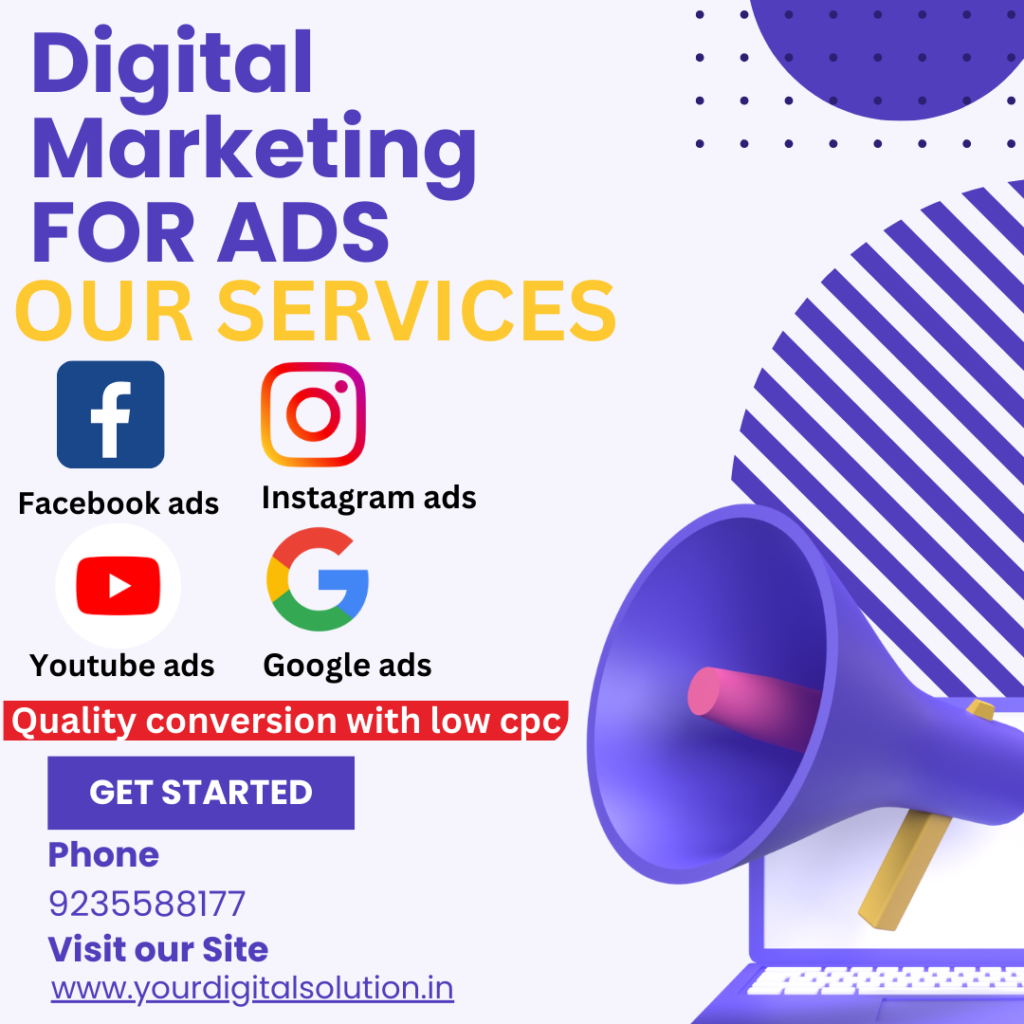
improve your marketing
Digital Marketing For Ads
main features
- facebook ads
- instagram ads
- youtube ads
- google ads
- social growth
Digital Marketing for Ads: Strategies and Best Practices
In the rapidly evolving landscape of the digital age, businesses must adapt to survive and thrive. Digital marketing has become the cornerstone of modern advertising, enabling companies to reach broader audiences, engage with customers more effectively, and measure their marketing efforts with unparalleled precision. This article explores the key strategies and best practices for leveraging digital marketing for ads to maximize your business’s growth and success.
Understanding Digital Marketing
Digital marketing encompasses all marketing efforts that use an electronic device or the internet. Businesses leverage digital channels such as search engines, social media, email, and other websites to connect with current and prospective customers. The goal is to reach and influence your target audience where they spend much of their time: online.
Key Strategies in Digital Marketing for Ads
1. Search Engine Optimization (SEO)
SEO involves optimizing your website and content to rank higher in search engine results pages (SERPs). By improving your site’s visibility, you attract more organic (non-paid) traffic. Key elements include keyword research, on-page optimization (such as meta tags and content quality), and off-page optimization (such as backlinks).
2. Pay-Per-Click (PPC) Advertising
PPC advertising allows you to place ads on search engines and other platforms, paying a fee each time your ad is clicked. Google Ads is one of the most popular PPC platforms. Effective PPC campaigns require well-researched keywords, compelling ad copy, and strategic bidding.
3. Social Media Marketing
Social media platforms like Facebook, Instagram, Twitter, and LinkedIn offer powerful advertising tools to reach specific demographics. Social media ads can be tailored to various objectives, such as brand awareness, website traffic, or lead generation. Engaging content and interactive elements like polls and contests can boost your campaign’s effectiveness.
4. Content Marketing
Content marketing involves creating and distributing valuable, relevant content to attract and engage your target audience. This can include blog posts, videos, infographics, eBooks, and more. Quality content helps establish your brand as an authority in your industry and drives organic traffic through SEO.
5. Email Marketing
Email marketing remains one of the most effective channels for direct communication with your audience. Personalized email campaigns can nurture leads, promote products, and build customer loyalty. Key tactics include segmentation, personalized content, and automation.
6. Influencer Marketing
Partnering with influencers—individuals with significant followings on social media—can amplify your brand’s reach. Influencers can provide authentic endorsements and reviews, helping to build trust with their audiences.
7. Affiliate Marketing
Affiliate marketing involves partnering with other businesses or individuals (affiliates) to promote your products. Affiliates earn a commission for each sale or lead they generate, providing a performance-based approach to marketing.
Best Practices for Digital Marketing Ads
1. Define Clear Objectives
Before launching any digital marketing campaign, define clear and measurable objectives. Whether you aim to increase brand awareness, generate leads, or boost sales, having specific goals will guide your strategy and help measure success.
2. Know Your Audience
Understanding your target audience is crucial for crafting relevant and effective ads. Conduct market research to identify your audience’s demographics, interests, and online behavior. Use this data to tailor your messaging and choose the right channels.
3. Create Compelling Content
High-quality content is the backbone of successful digital marketing. Your ads should be visually appealing, well-written, and provide value to your audience. Use storytelling techniques to make your content more engaging and memorable.
4. Utilize Data and Analytics
Digital marketing offers extensive data and analytics capabilities. Use tools like Google Analytics, Facebook Insights, and others to track your campaigns’ performance. Analyze this data to understand what’s working, what’s not, and make data-driven decisions.
5. Test and Optimize
Continuous testing and optimization are key to improving your digital marketing efforts. A/B testing, also known as split testing, allows you to compare different versions of an ad to see which performs better. Use these insights to refine your strategies.
6. Budget Wisely
Allocate your budget based on your objectives and the channels that provide the best return on investment (ROI). Be flexible and ready to adjust your spending as you gain insights into what works best.
7. Stay Updated with Trends
The digital marketing landscape is constantly changing. Stay updated with the latest trends and technologies to keep your strategies relevant. Attend industry conferences, read blogs, and participate in webinars to stay informed.
Conclusion
Digital marketing for ads is a dynamic and multifaceted discipline that requires a strategic approach and continuous adaptation. By leveraging key strategies such as SEO, PPC, social media marketing, and content marketing, and following best practices like defining clear objectives and utilizing data analytics, businesses can create effective digital marketing campaigns that drive growth and engagement. Embrace the power of digital marketing to connect with your audience, build your brand, and achieve your business goals.

At your digital solution we’re passionate about the transformative power of digital marketing. Our journey began with a simple belief: that every business, regardless of size or industry, deserves a spotlight in the online world.
Quick Links
Get In Touch
SA 17/128 54A Ganpati nagar colony pahariya varansi
- Email: contact@yourdigitalsolution.in
- Phone: +91 9235588177
- Hours: Mon-Fri 9:00AM - 7:00PM